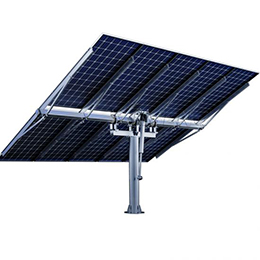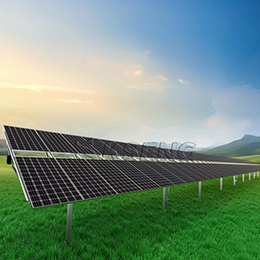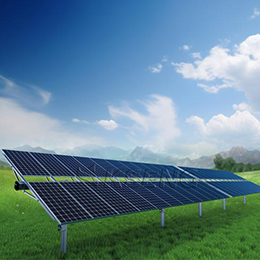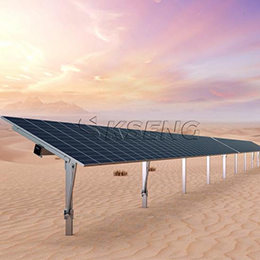What is the main aim of solar tracking system?
Jan 11, 2024
A solar tracking system is designed to maximize the efficiency and output of solar panels by continuously adjusting their position to follow the path of the sun throughout the day. The main aim of a solar tracking system is to increase the amount of sunlight that solar panels receive, ultimately leading to higher energy production. Let's delve into the key objectives and benefits of a solar tracking system.
 The primary objective of a solar tracker system is to optimize the angle and orientation of solar panels to maximize their exposure to sunlight. By tracking the movement of the sun from sunrise to sunset, the system ensures that the solar panels are always positioned at the optimal angle to receive the maximum amount of sunlight throughout the day.
A solar-tracking-system typically consists of sensors, motors, and a controller. The sensors detect the position of the sun, and the controller processes this information to determine the optimal position for the solar panels. The motors then adjust the position of the panels accordingly, ensuring they are always aligned with the sun's rays.
The primary objective of a solar tracker system is to optimize the angle and orientation of solar panels to maximize their exposure to sunlight. By tracking the movement of the sun from sunrise to sunset, the system ensures that the solar panels are always positioned at the optimal angle to receive the maximum amount of sunlight throughout the day.
A solar-tracking-system typically consists of sensors, motors, and a controller. The sensors detect the position of the sun, and the controller processes this information to determine the optimal position for the solar panels. The motors then adjust the position of the panels accordingly, ensuring they are always aligned with the sun's rays.
 The main benefit of a solar sun tracking system is increased energy production. By continuously adjusting the position of the solar panels, the system can capture a higher percentage of available sunlight, leading to a significant increase in energy generation. Studies have shown that solar tracking systems can increase energy output by up to 40% compared to fixed-tilt systems.
Another advantage of the solar panel tracking system is their ability to extend the peak energy production period. By following the sun's path, the system allows solar panels to generate electricity for a longer duration throughout the day, maximizing the utilization of sunlight.
The main benefit of a solar sun tracking system is increased energy production. By continuously adjusting the position of the solar panels, the system can capture a higher percentage of available sunlight, leading to a significant increase in energy generation. Studies have shown that solar tracking systems can increase energy output by up to 40% compared to fixed-tilt systems.
Another advantage of the solar panel tracking system is their ability to extend the peak energy production period. By following the sun's path, the system allows solar panels to generate electricity for a longer duration throughout the day, maximizing the utilization of sunlight.
 The solar tracking mount system also contributes to the overall efficiency and cost-effectiveness of solar energy systems. By maximizing energy production, they reduce the payback period and increase the return on investment for solar panel installations.
However, it is important to note that solar tracking systems are typically more expensive and require additional maintenance compared to fixed-tilt systems. They are more commonly used in large-scale solar installations, where the increased energy production justifies the higher costs.
The solar tracking mount system also contributes to the overall efficiency and cost-effectiveness of solar energy systems. By maximizing energy production, they reduce the payback period and increase the return on investment for solar panel installations.
However, it is important to note that solar tracking systems are typically more expensive and require additional maintenance compared to fixed-tilt systems. They are more commonly used in large-scale solar installations, where the increased energy production justifies the higher costs.
 In conclusion, the main aim of a solar tracking system is to optimize the position of solar panels to maximize their exposure to sunlight and increase energy production. By continuously tracking the sun's movement, these systems ensure that solar panels are always oriented for optimal performance. While they come with higher costs and maintenance requirements, solar tracking systems offer significant benefits in terms of increased energy output and overall system efficiency.
In conclusion, the main aim of a solar tracking system is to optimize the position of solar panels to maximize their exposure to sunlight and increase energy production. By continuously tracking the sun's movement, these systems ensure that solar panels are always oriented for optimal performance. While they come with higher costs and maintenance requirements, solar tracking systems offer significant benefits in terms of increased energy output and overall system efficiency.



